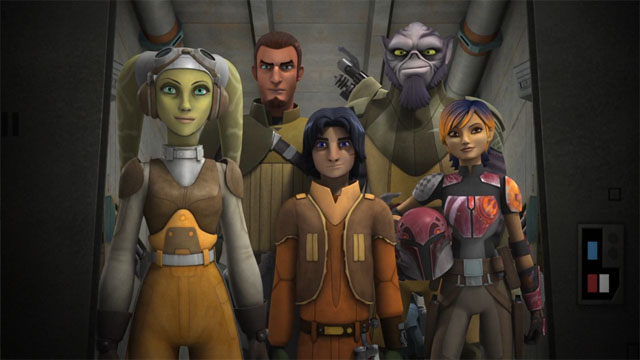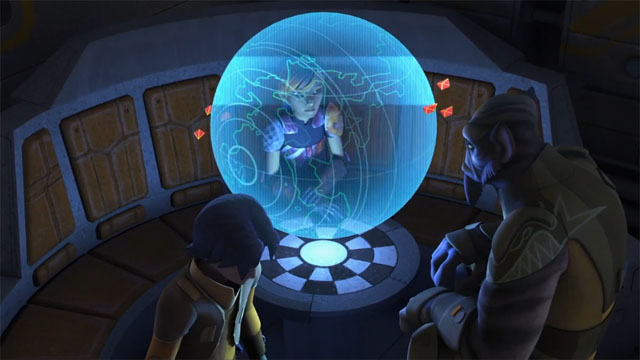
Ben: When Star Wars Rebels started, we were privy to a very small knot of rebellious souls. A former Jedi turned drunken gunslinger, a Lasat with a chip on his shoulder and temper to match, a Mandalorian who loved to paint as much as fight, a street-rat orphan who stole for a living and a cranky patchwork astromech droid, all held together by a Twi’lek pilot who kept them pointed at the Empire instead of each other. The season went on; we got to see more of their personalities and hints of backstory, and caught occasional glimpses of a wider picture, of a bigger plan than just the group on Lothal. It wasn’t until the finale of the first season, however, that we finally saw what that meant.
We had hints from the beginning that the Lothal rebellion was just one of many in existence. Agent Kallus’ report to the Inquisitor at the end of the show’s pilot told us as much. The segmentation of the organization, keeping each cell separate with as little knowledge as possible of the others, is intelligent strategy taken from real-life resistance groups, such as the French Resistance in World War II. You cannot betray what you do not know. While Lothal seems a rather unimportant backwater world, the Empire is there, and that is (seemingly) enough for Hera. But this would be far from a normal cell, and their impact would be far larger than Hera would ever have guessed at the beginning. Read More




